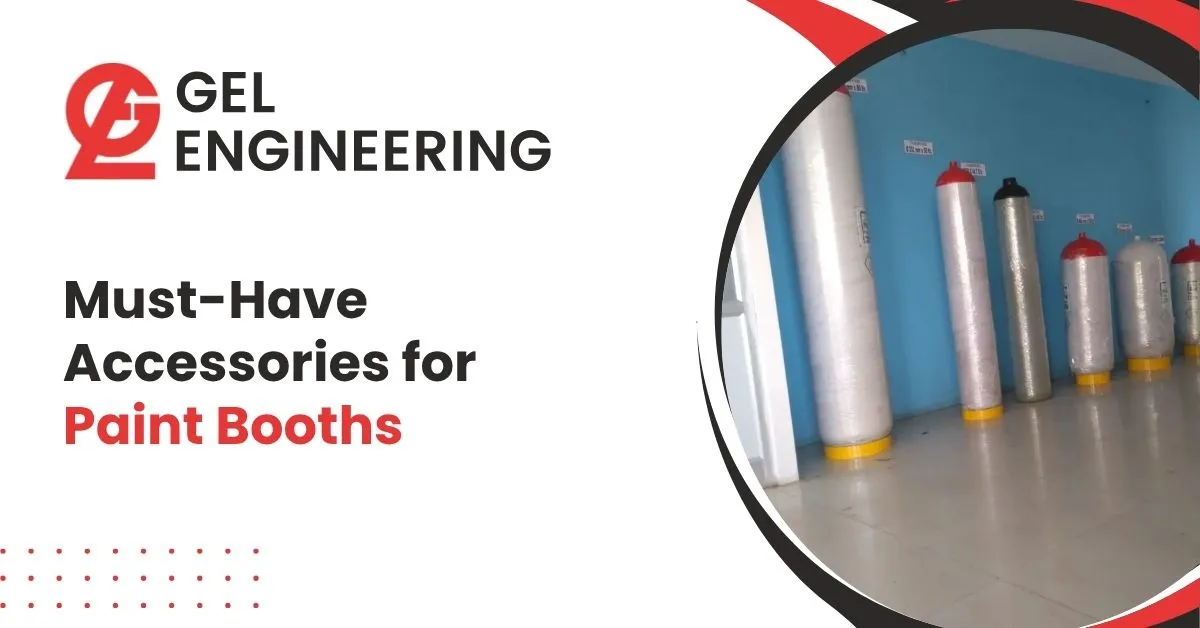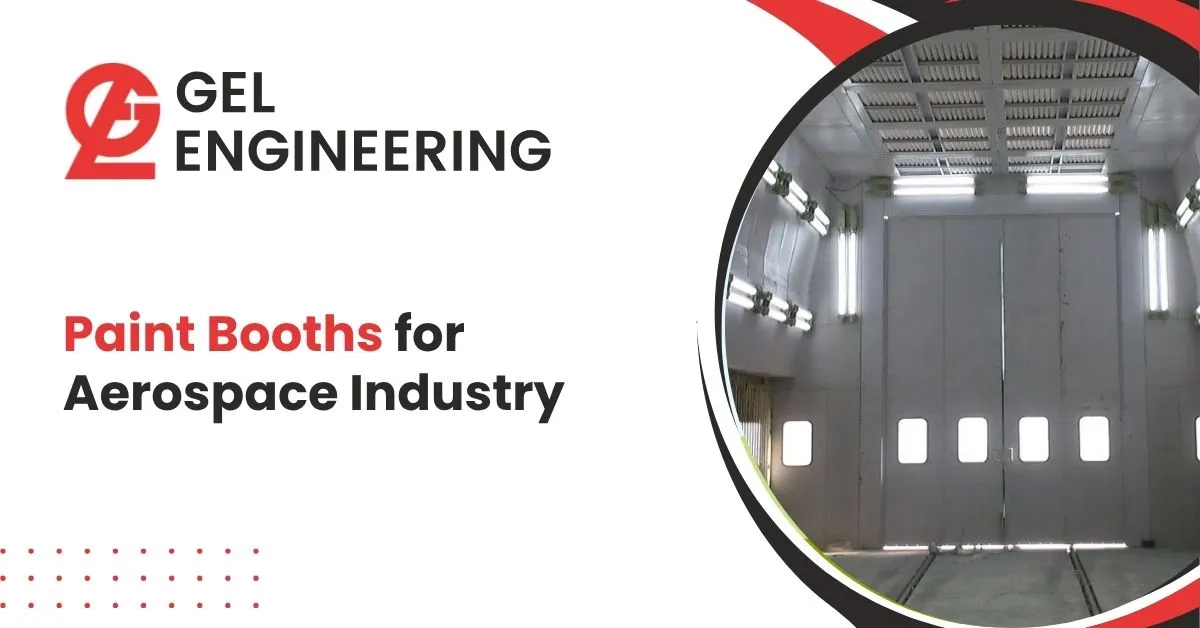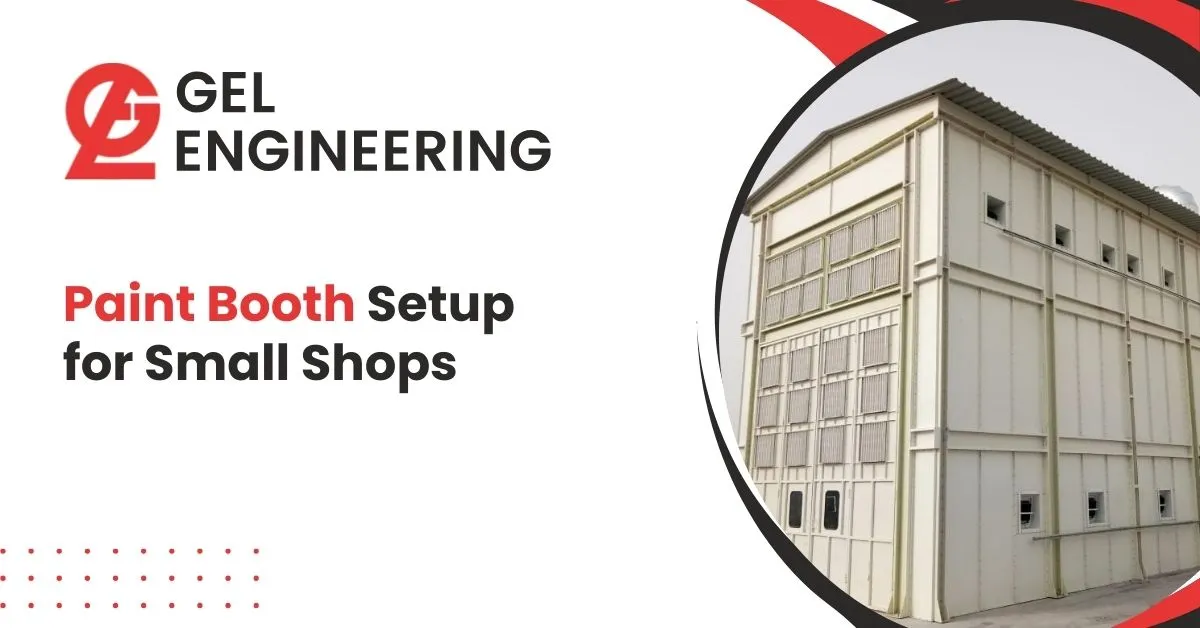Enhance Performance, Safety & Efficiency in Your Spray Painting Process When it comes to industrial…

Airflow is a critical component in the design and operation of paint booths. Proper airflow ensures the quality of finishes, enhances safety, and maintains compliance with environmental and occupational health standards. This guide outlines the essential aspects of paint booth airflow requirements and how they impact performance and safety.
Why Airflow Matters in a Paint Booth
The airflow in a paint booth serves multiple purposes:
Maintains Cleanliness: Prevents dust and contaminants from settling on freshly painted surfaces.
Removes Overspray: Effectively captures and removes overspray to avoid imperfections.
Ensures Safety: Reduces the risk of fire and exposure to harmful fumes by venting volatile organic compounds (VOCs) and other chemicals.
Improves Efficiency: Creates a consistent environment for optimal paint application.
Key Airflow Standards and Regulations
When designing or operating a paint booth, it is essential to adhere to industry standards such as:
OSHA (Occupational Safety and Health Administration): Specifies ventilation and safety requirements to protect workers.
NFPA 33 (National Fire Protection Association): Provides guidelines for fire prevention in spray application operations.
EPA (Environmental Protection Agency): Regulates the release of hazardous air pollutants (HAPs).
Types of Airflow in Paint Booths
Cross-Draft Airflow:
Air flows horizontally from one end of the booth to the other.
Commonly used for smaller operations or where space is limited.
Pros: Cost-effective and easy to install.
Downdraft Airflow:
Air flows vertically from the ceiling to the floor.
Ideal for high-quality finishes in automotive and aerospace industries.
Pros: Excellent removal of overspray and contaminants.
Side-Draft Airflow:
Air flows horizontally from sidewalls towards exhaust filters.
Provides even airflow and effective overspray capture.
Pros: Combines the benefits of cross-draft and downdraft systems.
Semi-Downdraft Airflow:
Air flows diagonally from the ceiling towards the back of the booth.
A hybrid option for operations requiring better airflow than cross-draft but less investment than full downdraft.
Ready to optimize your paint booth’s performance? Explore expert tips and insights to ensure safety and quality finishes today! Contact us now for tailored solutions!
Key Airflow Requirements for Optimal Performance
Air Velocity:
- Maintain a consistent air velocity between 50 to 100 feet per minute (fpm) for most applications.
- Automotive paint booths typically require higher velocities, up to 150 fpm.
Uniform Airflow Distribution:
- Use baffles or air diffusers to ensure even airflow across the booth.
- Avoid dead zones where airflow is stagnant or turbulent.
Exhaust System Efficiency:
- Incorporate high-capacity exhaust fans to capture overspray and fumes effectively.
- Ensure the exhaust ducting is free from blockages and meets local codes.
Filter Maintenance:
- Regularly inspect and replace intake and exhaust filters to maintain airflow efficiency.
- Use multi-stage filtration systems to capture a range of particle sizes.
Temperature and Humidity Control:
- Maintain consistent temperature (68°F to 77°F) and humidity levels (40% to 60%) to optimize paint adhesion and drying.
Factors Affecting Airflow Design
Booth Size:
Larger booths require more robust ventilation systems to ensure adequate airflow.
Type of Coating:
Solvent-based paints produce more VOCs and require higher airflow rates compared to water-based paints.
Production Volume:
High-volume operations demand systems that can handle continuous airflow without compromising efficiency.
Energy Efficiency:
Implement energy-saving features such as variable frequency drives (VFDs) for fans and recirculating air systems.
Common Issues and Troubleshooting
Inadequate Airflow:
Symptoms: Dusty finishes, uneven coatings, or paint overspray escaping the booth.
Solution: Check for clogged filters, obstructions in ducting, or underpowered fans.
Turbulent Airflow:
Symptoms: Swirling patterns or inconsistent paint application.
Solution: Adjust baffles or airflow diffusers for better distribution.
Excessive Energy Use:
Symptoms: High operational costs without improved performance.
Solution: Optimize fan speeds and upgrade to energy-efficient components.
Frequently Asked Questions
How much airflow does a paint booth need?
A paint booth typically requires 50-150 feet per minute (fpm) of airflow, depending on the type and application.
What are the ventilation requirements for paint booths?
Paint booths need efficient exhaust systems, proper air exchange rates, and multi-stage filters to meet safety and regulatory standards.
What is the air velocity of a paint booth?
Air velocity in a paint booth ranges from 50 to 100 fpm, with automotive applications often requiring up to 150 fpm for optimal results.
Conclusion
Understanding and maintaining proper airflow in your paint booth is essential for achieving high-quality finishes, ensuring safety, and meeting regulatory standards. By carefully considering the type of airflow, adhering to recommended velocity and filtration requirements, and performing regular maintenance, you can optimize the performance of your paint booth and create a safer work environment.




